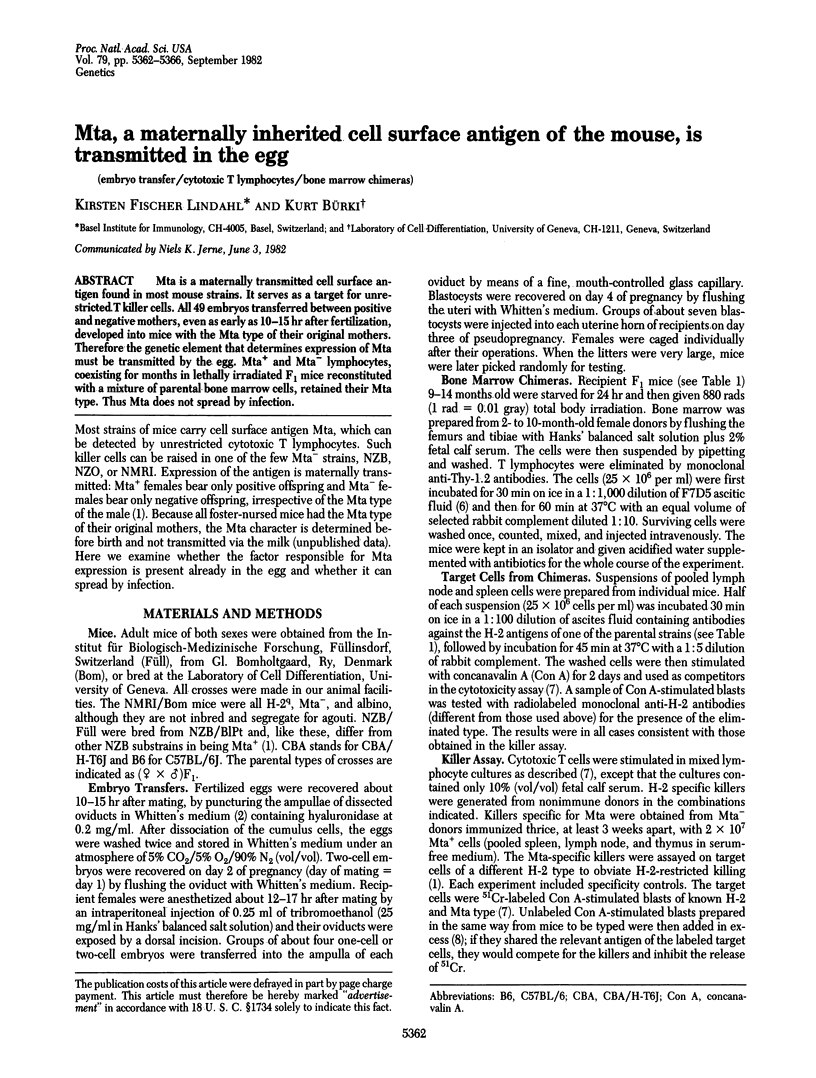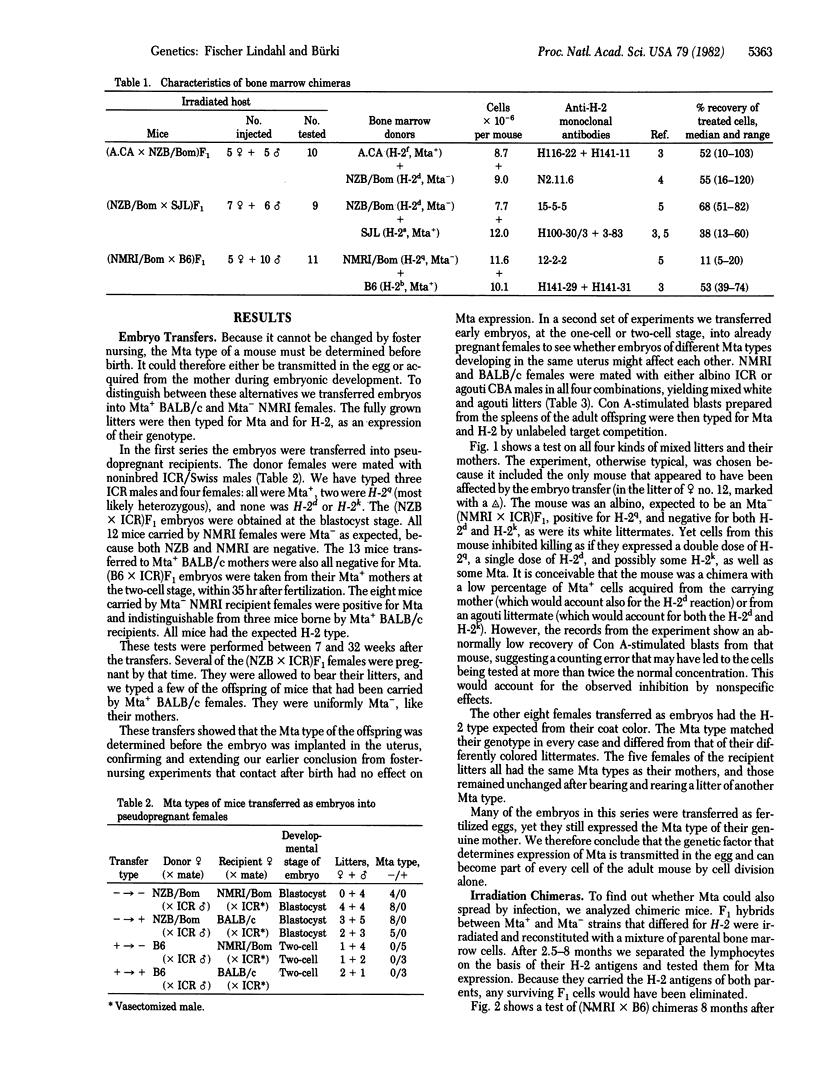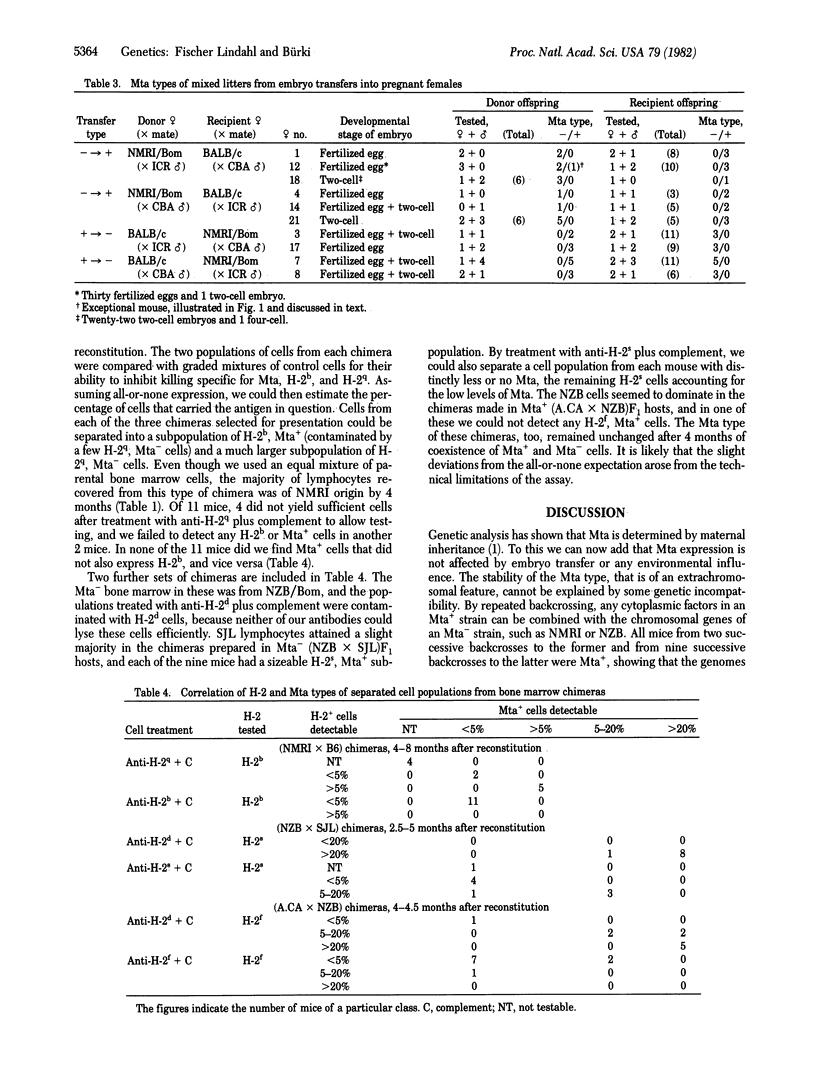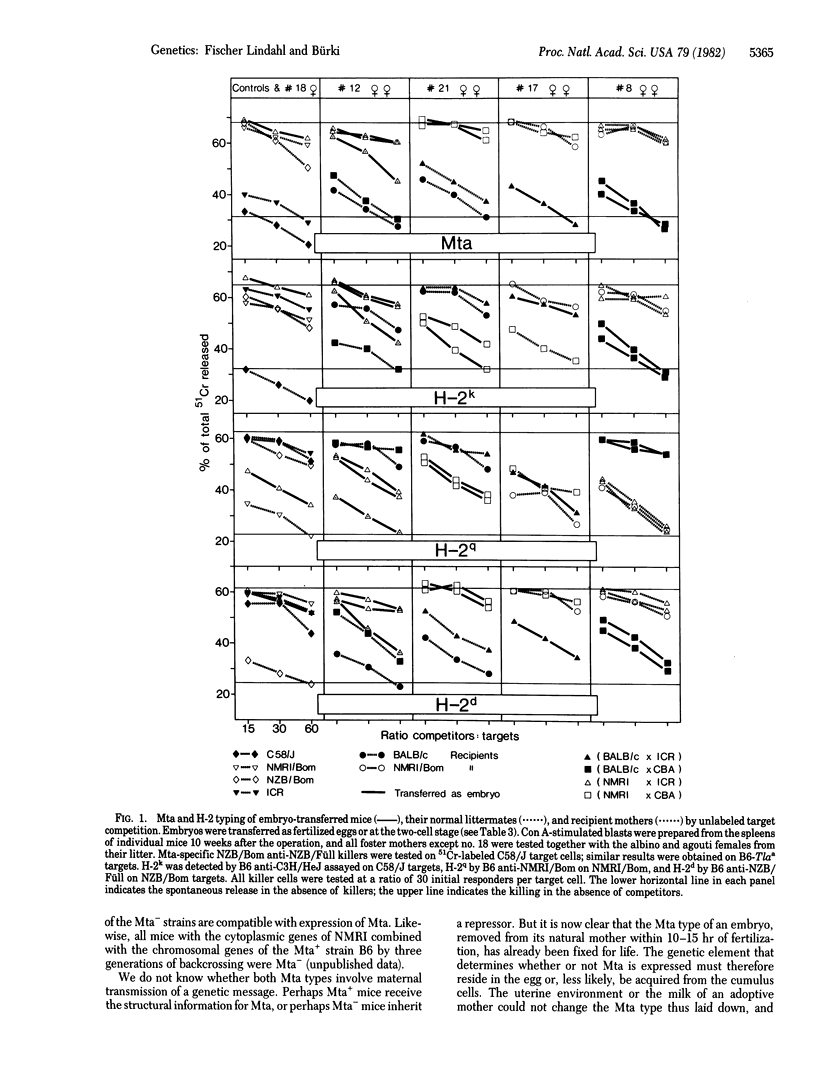Abstract
Mta is a maternally transmitted cell surface antigen found in most mouse strains. It serves as a target for unrestricted T killer cells. All 49 embryos transferred between positive and negative mothers, even as early as 10-15 hr after fertilization, developed into mice with the Mta type of their original mothers. Therefore the genetic element that determines expression of Mta must be transmitted by the egg. Mta+ and Mta- lymphocytes, coexisting for months in lethally irradiated F1 mice reconstituted with a mixture of parental bone marrow cells, retained their Mta type. Thus Mta does not spread by infection.
Full text
PDF




Selected References
These references are in PubMed. This may not be the complete list of references from this article.
- Fischer Lindahl K., Bocchieri M., Riblet R. Maternally transmitted target antigen for unrestricted killing by NZB T lymphocytes. J Exp Med. 1980 Dec 1;152(6):1583–1595. doi: 10.1084/jem.152.6.1583. [DOI] [PMC free article] [PubMed] [Google Scholar]
- Hoppe P. C., Pitts S. Fertilization in vitro and development of mouse ova. Biol Reprod. 1973 May;8(4):420–426. doi: 10.1093/biolreprod/8.4.420. [DOI] [PubMed] [Google Scholar]
- Lake P., Clark E. A., Khorshidi M., Sunshine G. H. Production and characterization of cytotoxic Thy-1 antibody-secreting hybrid cell lines. Detection of T cell subsets. Eur J Immunol. 1979 Nov;9(11):875–886. doi: 10.1002/eji.1830091109. [DOI] [PubMed] [Google Scholar]
- Lemke H., Hämmerling G. J., Hämmerling U. Fine specificity analysis with monoclonal antibodies of antigens controlled by the major histocompatibility complex and by the Qa/TL region in mice. Immunol Rev. 1979;47:175–206. doi: 10.1111/j.1600-065x.1979.tb00293.x. [DOI] [PubMed] [Google Scholar]
- Lindahl K. F., Hausmann B., Flaherty L. Polymorphism of a Qa-1-associated antigen defined by cytotoxic T cells. I. Qed-1a and Qed-1d. Eur J Immunol. 1982 Feb;12(2):159–166. doi: 10.1002/eji.1830120211. [DOI] [PubMed] [Google Scholar]
- Lindahl K. F., Hausmann B. Qed-1--a target for unrestricted killing by T cells. Eur J Immunol. 1980 Apr;10(4):289–298. doi: 10.1002/eji.1830100413. [DOI] [PubMed] [Google Scholar]
- Ozato K., Mayer N., Sachs D. H. Hybridoma cell lines secreting monoclonal antibodies to mouse H-2 and Ia antigens. J Immunol. 1980 Feb;124(2):533–540. [PubMed] [Google Scholar]
- Smilek D. E., Boyd H. C., Wilson D. B., Zmijewski C. M., Fitch F. W., McKearn T. J. Monoclonal rat anti-major histocompatibility complex antibodies display specificity for rat, mouse, and human target cells. J Exp Med. 1980 May 1;151(5):1139–1150. doi: 10.1084/jem.151.5.1139. [DOI] [PMC free article] [PubMed] [Google Scholar]


